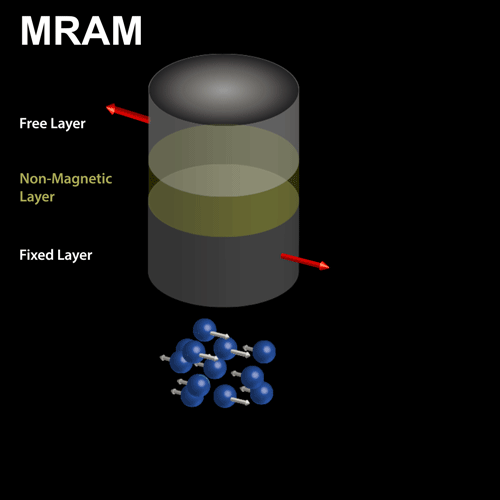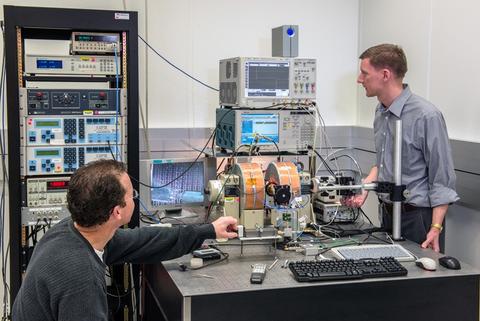Summary
The program on magnetic random-access memory develops metrology to determine how spin currents can be generated and used to control and manipulate magnetization in new ways at timescales less than 1 ns. We provide and disseminate advanced high frequency measurements, analysis, and fabrication of nanoscale magnetic structures and materials to enable the development of novel spin-based devices.
Description

Focus areas include (1) the fundamental understanding of the interactions between spin and magnetic materials and materials with large spin-orbit scattering; (2) the nonlinear dynamics of both individual and interacting nanoscale magnetic systems; and (3) the role of thermal noise in nanomagnetic systems. We study how these effects can be controlled with applied spin currents and electric fields. Applications include nonvolatile magnetic data storage, active magnetic nanoscale devices, and novel radiofrequency communications. We have developed new metrology to characterize and understand the behavior of nanoscale magnetic memory elements in disparate environments. For instance, we developed ways to monitor individual switching events in spintronic devices and perform ferromagnetic-resonance spectroscopy of individual devices. This work has direct relevance to companies developing memory for both conventional and superconducting supercomputers.
Major Accomplishments
Spin-Transfer-Torque Magnetic Random-Access Memory
The ubiquitous dynamic random-access memory (DRAM) for computers must be refreshed every 50 ms or so and therefore requires power to retain information. A promising alternative to DRAM is a nonvolatile, radiation-hard, low-energy-loss, nanoscale, magnetic memory: spin-transfer-torque magnetic random-access memory (STT-MRAM). An STT-MRAM element consists of two ferromagnetic layers separated by a thin (about 1 nm) MgO layer, which allows the two layers to behave independently and contributes to the electrical transport through the device. The resistance of such a structure depends on the relative orientations of the magnetization of the two layers; it changes by roughly a factor of two when their magnetizations are switched between parallel (P) and antiparallel (AP), thus storing "0" and "1" bit states. The structures are fabricated so that the two ferromagnetic layers in the three-layer sandwich are asymmetric, which allows one of the layers to be switched freely while the other is fixed.

In conventional MRAM, switching between these states is achieved with applied magnetic fields. Spin-transfer torque, on the other hand, allows switching between the P and AP states to be achieved with low-loss, spin-polarized currents, which impart their angular momentum to the magnetization of the free layer in the film stack. We developed new methods to measure switching statistics for over one million events per device, which showed that many experimental devices do not necessarily switch reliably at the levels required by the microelectronics industry. We found that certain devices (or bits) behave differently than their seemingly identical counterparts, and we developed a frequency-domain method to quickly identify these individual outliers.
Publications
- R. Heindl, W. H. Rippard, S. E. Russek, and M. R. Pufall, "Time-domain analysis of spin-torque induced switching paths in nanoscale CoFeB/MgO/CoFeB magnetic tunnel junction devices," J. Appl. Phys. 116, 243902 (Dec 2014); doi: 10.1063/1.4905023.
- E. R. Evarts, R. Heindl, W. H. Rippard, and M. R. Pufall, "Correlation of anomalous write error rates and ferromagnetic resonance spectrum in spin-transfer-torque-magnetic-random-access-memory devices containing in-plane free layers," Appl. Phys. Lett. 104, 212402 (May 2014); doi: 10.1063/1.4879847.

